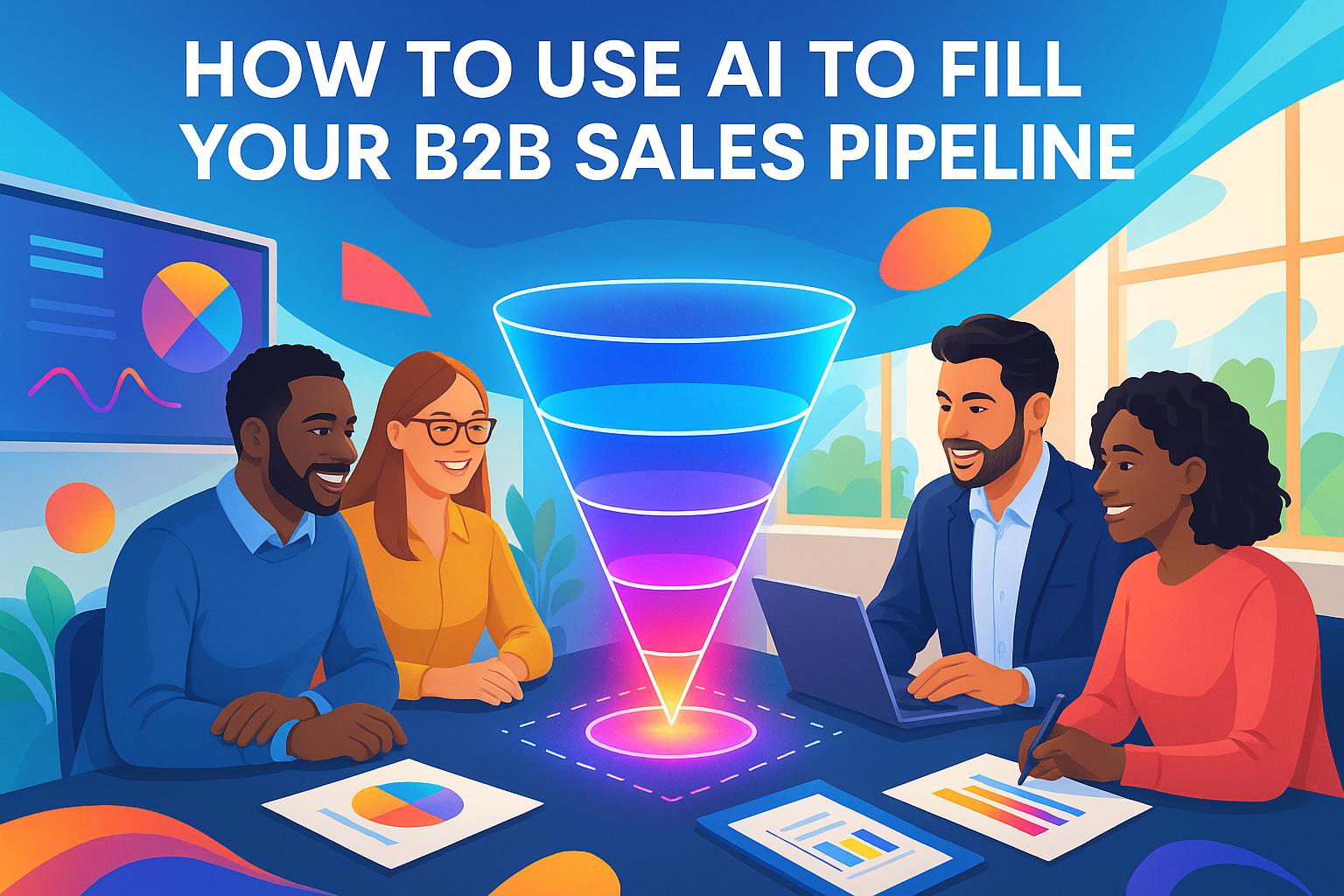
Artificial intelligence (AI) has become one of the most transformative tools in modern business. Its ability to streamline processes, optimize workflows, and boost productivity is no longer reserved for large corporations. In today’s fast-paced market, leveraging AI in your B2B sales pipeline can mean the difference between thriving and falling behind your competitors.
This article dives into practical insights shared by John Long, founder of Think AI, during a discussion with Doug C. Brown on the "CEO Sales Strategies" podcast. John explained how AI can optimize sales pipelines, tackle inefficiencies, and enhance decision-making in a way that’s accessible and actionable for businesses of all sizes.
If you're a B2B business owner or a financial professional seeking strategies to consistently acquire high-quality clients while cutting costs, read on to uncover the key ways AI can reshape your operations.
Before jumping into implementation, it's crucial to grasp the two primary types of AI discussed in the conversation:
Generative AI, like ChatGPT, Bard, or Claude, is designed to assist with content creation and problem-solving. John Long likens it to a "rough draft partner" - great at handling repetitive tasks or large-scale idea generation, but requiring human input to refine and polish the final product.
Generative AI can be used to:
As John explains, this type of AI serves as an excellent tool for augmenting creativity and speeding up workflows, relieving businesses of mundane and repetitive tasks.
Unlike generative AI, agentic AI operates with decision-making capabilities. It’s akin to a quarterback on a football team, equipped to assess situations, make choices, and execute plays - all within the guardrails established by the user.
John’s analogy is powerful: imagine you, as the business owner, are the coach providing the strategy, while the agentic AI (your quarterback) evaluates real-time scenarios on the field and adjusts accordingly to achieve your business goals.
Agentic AI can:
Despite its immense potential, AI often sparks hesitation. John identifies key reasons for this:
Rather than viewing these challenges as roadblocks, John encourages business owners to see them as opportunities to optimize and future-proof their operations.
One of the most significant issues businesses face is failing to follow up with leads. Research shows that 50% of leads are never contacted, and as John points out, some companies see as much as 30-40% of inbound leads ignored by sales teams.
AI can step in to bridge this gap:
In one example shared by John, a business used an AI agent to contact old leads that had been ignored for years. Within one day of implementation, the AI generated four sales. By the end of the first week, it had closed 30 transactions - purely through consistent follow-up.
AI agents can handle a wide range of customer-facing interactions, from answering initial inquiries to scheduling demonstrations or calls. Systems like Rita at the Rio Hotel in Las Vegas or SiriusXM’s AI-driven service agents are prime examples. These AI agents:
For B2B sales, this means AI agents can qualify leads, gather key information, and set up appointments so that human salespeople can focus on closing deals rather than administrative tasks.
AI isn’t just for customer interactions - it can also simplify internal workflows and eliminate inefficiencies. For example:
By taking over these repetitive tasks, AI frees up employees to focus on higher-value work, such as strategy, relationship building, and innovation.
Whether you run a solo financial advisory or a billion-dollar fintech firm, the message is clear: embracing AI is no longer optional. Business leaders who delay implementation risk being overtaken by competitors who leverage AI to scale faster, work smarter, and deliver better results at lower costs.
John emphasizes that AI’s growth is exponential. Falling behind even by six months can create a competitive gap that’s nearly impossible to close. The businesses adopting AI today are building a foundation that will allow them to innovate faster and more effectively than those who resist change.
AI is no longer a futuristic concept; it’s a present-day necessity for businesses looking to thrive in an increasingly competitive landscape. Whether it’s automating lead follow-up, elevating customer experiences, or optimizing internal workflows, AI has the potential to transform how your business operates.
The future of business is here, and AI is at the forefront. The question is not whether to embrace AI but how quickly you can integrate it into your processes to stay ahead of the competition. Will you ride the AI wave - or risk being left behind?
Source: "How to Use AI for Lead Generation and Fill Your Sales Pipeline Faster [Episode 200]" - Doug C. Brown, YouTube, Aug 26, 2025 - https://www.youtube.com/watch?v=zXz1i6CheQw